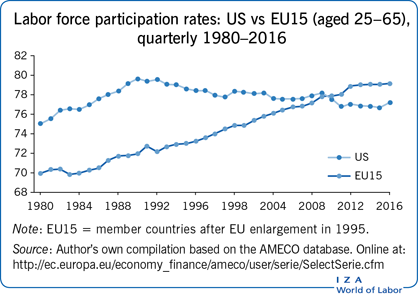Elevator pitch
Employment and labor force participation (LFP) rates have increased throughout Europe since the 1990s, with little interruption from the Great Recession. While many credit labor market reforms for this progress, ongoing educational expansion might actually be more important. This implies that the overall employment rate of an economy can change if the share of the population with tertiary education increases, even in the absence of any labor market reforms or effects of the business cycle. Taking this compositional effect into account makes it possible to disentangle the impact of reforms.

Key findings
Pros
In Europe, employment and LFP rates have increased trend-wise, since the 1990s, with little interruption from the Great Recession.
Due to their higher LFP rates, a rise in the proportion of highly educated people will lead to higher overall participation rates.
Two-thirds of the improvement in LFP rates observed in Europe can be accounted for by the population’s increasing educational achievement levels over the last decades.
There has been a particularly large increase in the LFP rates of the elderly, even accounting for the natural increase expected from their higher education achievements in 2016 (compared to a generation earlier).
Cons
The rise in elderly participation rates is easier to explain with changes to pension systems than with labor market reforms.
It is difficult to pinpoint the impact of particular reform episodes on elderly participation rates, whether aimed at labor markets or pensions rules.
Changes in overall LFP rates are not reliable indicators of the state of the labor market when the workforce composition changes.